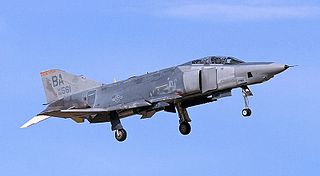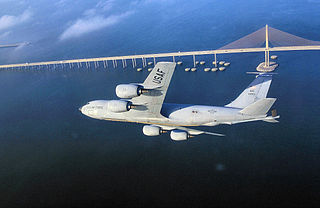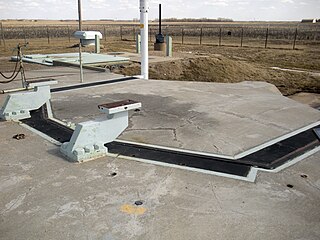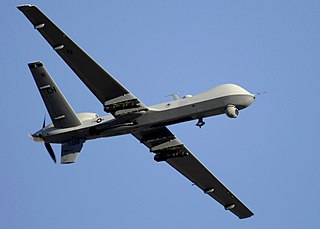
The 72nd Air Base Wing is a United States Air Force unit assigned to the Air Force Sustainment Center at Tinker Air Force Base, Oklahoma. It has been the host unit at Tinker since activating there on 1 October 1994.

The 91st Missile Wing is a United States Air Force unit assigned to the Air Force Global Strike Command Twentieth Air Force. It is stationed at Minot Air Force Base, North Dakota as a tenant unit.

The 91st Bombardment Group (Heavy) was an air combat unit of the United States Army Air Forces during the Second World War. Classified as a heavy bombardment group, the 91st operated Boeing B-17 Flying Fortress aircraft and was known unofficially as "The Ragged Irregulars" or as "Wray's Ragged Irregulars", after the commander who took the group to England. During its service in World War II the unit consisted of the 322nd, 323rd, 324th, and 401st Bomb Squadrons. The 91st Bombardment Group is most noted as the unit in which the bomber Memphis Belle flew, and for having suffered the greatest number of losses of any heavy bombardment group in World War II.

The 91st Cyberspace Operations Squadron is an active United States Air Force unit, currently assigned to the 67th Cyberspace Wing at Kelly Annex, part of Lackland Air Force Base, Texas.

The 512th Rescue Squadron is part of the 58th Special Operations Wing based at Kirtland Air Force Base, New Mexico. It formerly operated the Bell UH-1N Twin Huey and currently operates the Sikorsky HH-60G Pave Hawk and the new HH-60W Jolly Green II helicopters training aircrew conducting search and rescue missions.

The 314th Air Division is an inactive United States Air Force unit. Its last assignment was with Pacific Air Forces at Osan Air Base, South Korea, where it was inactivated in September 1986.

The 91st Air Refueling Squadron is part of the 6th Air Mobility Wing at MacDill Air Force Base, Florida. It operates the Boeing KC-135R Stratotanker aircraft conducting air refueling missions.

The 810th Strategic Aerospace Division is an inactive United States Air Force organization. Its last assignment was with Strategic Air Command (SAC), assigned to Fifteenth Air Force at Minot Air Force Base, North Dakota, where it was inactivated on 30 June 1971.

The 319th Missile Squadron is a United States Air Force unit assigned to the 90th Operations Group at Francis E. Warren Air Force Base, Wyoming. The squadron is equipped with the LGM-30G Minuteman III intercontinental ballistic missile, with a mission of nuclear deterrence. It is the flagship squadron of the 90th Missile Wing.

The 320th Missile Squadron is a United States Air Force unit. It is assigned to the 90th Operations Group, stationed at F.E. Warren AFB, Wyoming. The 320 MS is equipped with the LGM-30G Minuteman III Intercontinental ballistic missile (ICBM), with a mission of nuclear deterrence.

The 321st Missile Squadron is a United States Air Force unit. It is assigned to the 90th Operations Group, stationed at Francis E. Warren Air Force Base, Wyoming. The squadron is equipped with the LGM-30G Minuteman III Intercontinental ballistic missile (ICBM). Their mission is to operate safe and secure nuclear weapons, maintain mission ready facilities, and on order destroy OPLAN assigned targets.

The 301st Operations Group is a flying component of the 301st Fighter Wing, assigned to the United States Air Force Reserve Tenth Air Force. The group is stationed at Carswell Field, Texas.

The 308th Armament Systems Group is a unit of the United States Air Force's 308th Armament Systems Wing, stationed at Eglin Air Force Base, Florida. The group was first activated at Gowen Field, Idaho as the 308th Bombardment Group. It served as a Consolidated B-24 Liberator unit in the China-Burma-India Theater, where it conducted long range bombing missions against Japanese forces, earning a Distinguished Unit Citation. Following V-J Day, it returned to the United States and was inactivated in January 1946.

The 90th Operations Group is the operational component of the 90th Missile Wing of the United States Air Force. It is stationed at Francis E. Warren Air Force Base, Wyoming, and is assigned to Twentieth Air Force of Air Force Global Strike Command. The group is responsible for maintaining and operating on alert the wing's assigned LGM-30G Minuteman III intercontinental ballistic missiles.

The 28th Operations Group is the flying component of the United States Air Force 28th Bomb Wing, stationed at Ellsworth Air Force Base, South Dakota.

The 513th Electronic Warfare Squadron is a United States Air Force unit assigned to the 350th Spectrum Warfare Group at Eglin Air Force Base, Florida.

The 718th Bombardment Squadron is an inactive United States Air Force unit. It was last assigned to the 4128th Strategic Wing at Amarillo Air Force Base, Texas, where it was inactivated on 1 February 1963.

The 322d Expeditionary Reconnaissance Squadron is a provisional unit of the United States Air Force, assigned to Air Combat Command to activate or inactivate as needed.

The 324th Expeditionary Reconnaissance Squadron is a provisional United States Air Force unit. It is assigned to the 409th Air Expeditionary Group at Naval Air Station Sigonella, Italy.

The 323d Strategic Reconnaissance Squadron is an inactive United States Air Force unit. Its last was assigned to the 91st Strategic Reconnaissance Wing, stationed at Lockbourne Air Force Base, Ohio. It was inactivated on 8 November 1957.


























